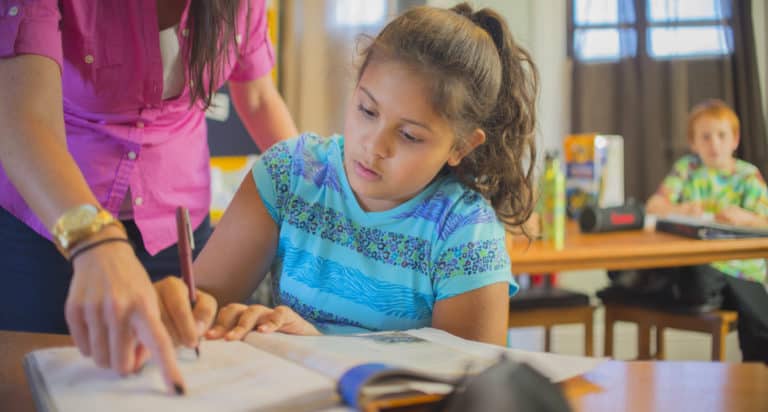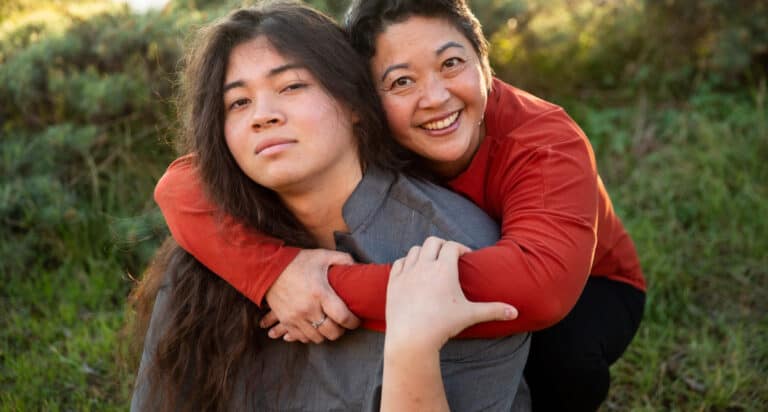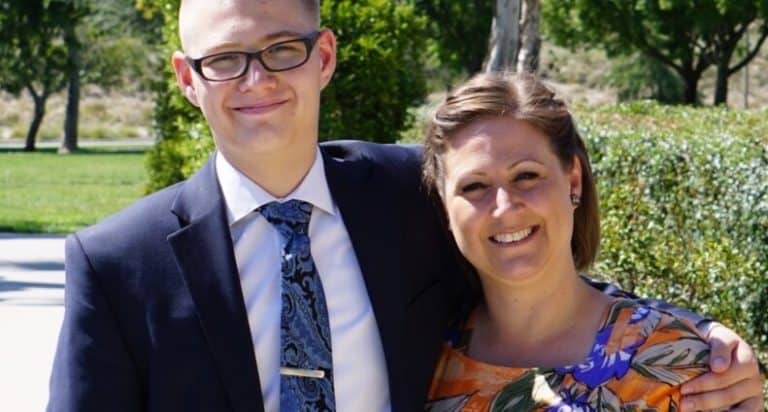When Ruthie telephones, I can hear that all is not well. She sounds hesitant, possibly embarrassed to be calling me after successful treatment for social anxiety disorder (SAD) three years earlier. When we first met, Ruthie was struggling to adjust to a new, large high school and she was extremely anxious about meeting people or “making a fool” of herself.
Ruthie was small in stature, excelled in school, and when relaxed, was very funny. Always shy, Ruthie had nonetheless coped well with a small group of friends, an interest in animals, and close relationships with her older sister Karla, and her parents.
The summer before high school, though, Ruthie started to become preoccupied with worry about how she looked, whether she could speak up in class and eat in public. Next Ruthie started to avoid events, like parties and family gatherings. She tried to sit in the back of the room so she wouldn’t be called on in classes and refused to join any extracurricular activities for fear of having to meet new people.
Once when she was with her father at the local mall, she suddenly told him she had to leave and practically ran back to the car. By sophomore year, when I met her, Ruthie was psychologically retreating into smaller and smaller spaces and still continued to be preoccupied with fears of negative judgment. She was experiencing intense fears of rejection and humiliation and her frequent fears interfered with both her academic and social life.

Eleven percent of females and 7% of males suffer from social anxiety disorder (SAD)
The intensity, frequency, and disruptive nature of Ruthie’s symptoms meet the criteria for social anxiety disorder. Everyone fears social or work situations at one time or another, with fear of public speaking the most common phobia in the US. Some people have periodic social worries, like butterflies before going to a party but get by.
In contrast, Ruthie felt like she “just couldn’t handle” her fears. Ruthie’s situation is not uncommon, 11.2% of females and 7% of males have SAD. And more teens have some but not all of the symptoms of SAD.
After several months of cognitive behavior therapy, including gradual exposure to social situations and educating Ruthie and her parents about social anxiety, Ruthie progressed well. We explored her fears and she started to learn self-correction strategies about her negative self-assessments, a common problem for those with SAD.
Not, “That presentation was a disaster” but “I stammered a little at first but most people looked at least somewhat interested.” We created a hierarchy of new behaviors, starting slowly but having Ruthie consistently face her feared situations. Most importantly, I encouraged Ruthie to stop avoiding activities that provoked anxiety. I explained that every time she avoided anxiety, she was creating a pattern that reinforced fear. This was the pattern: Her social anxiety would increase, then she would find a way to avoid an activity, so the anxiety would lessen, and that felt like a reward or reinforcing experience.
By avoiding fears you extend them and give them more power
But by not going to a meeting Ruthie increased her power to create anxiety in the future and extended her problems. If, in contrast, she went to the meeting, accepted that she might be somewhat nervous but could manage, she would be learning a new skill, distress tolerance, and developing more social skills as well. (“So you’re saying that I should avoid avoidance?” —“Yes!”)
After two months, Ruthie began to feel much better. At the end of treatment, she pointed out that she wasn’t “the life of the party” but that she was very happy to be able to cope in school now with friends and volunteer work at an animal shelter. Ruthie enjoyed the rest of high school until the pandemic hit during her senior year.
She checked in with me from time to time and I was pleased that she managed to adjust to Zoom and other virtual learning platforms. As one would expect, she hated seeing herself on video, but she added that she didn’t have to watch people’s reactions to her and for Ruthie, the school was more efficient when done virtually. In addition, she looked forward to college as she has been accepted early decision to a small liberal arts school. Ruthie’s class is sometimes referred to as the “Lost Class of 2020” and indeed Ruthie’s graduation ceremony was virtual, brief, and followed by a car parade. (“Really kinda pathetic”)
It’s common for old fears to resurface
In the late summer, some of Ruthie’s old fears reemerged. This is not uncommon as students approach the start of college. Ruthie tumbled into the world of “what ifs.” What if the pandemic rules prevented her from meeting friends? What if she wore the wrong clothes? What if she had to sit alone in a cafeteria and draw attention to herself?
Ruthie now had the tools to manage her anxiety better. She shared her concerns with friends and was relieved to hear that many of them were having the same worries. She was hopeful about her college experience but unfortunately, it did not get off to an auspicious start.
It was not at all what Ruthie had imagined: her parents driving her to college, staying for a while to help her get settled in her room, and maybe meet a roommate and their family, then students could meet one another at an event. None of that happened. Students went for a COVID test as soon as they arrived on campus. After the test, they could have only one adult go into the dorm and help them move in but for as little time as possible.
Ruthie was given a bag with three meals in it. “Dis-GUS-ting!” and was instructed to stay in her room except for using the bathroom until she received their COVID test results. Orientation activities were held via Zoom. Students could only socialize outside with masks on in groups of less than ten. Despite all these precautions, the students were sent home by October for virtual classes due to a steep rise in COVID-19 cases.
Although disappointed, Ruthie got a part-time job and spent more time at home with her mother, Camille, a research librarian for a law firm that was working from home. We had talked about mindfulness and patience during her therapy and so Ruthie also joined an online meditation class.
Covid has complicated the world for those who suffer social anxiety disorder
When Ruthie called me, the second semester was approaching and many of Ruthie’s social anxieties increased. That first semester turned out to be an unintended, long, avoidance strategy. Through no fault of her own, as she feared, Ruthie was returning with no close friends nor was she comfortable on campus and feared being rejected by the other students, whom she imagined were all more plugged in than she was.
The “what ifs” returned with a vengeance. Ruthie also found herself slipping back into her old avoidant ways, avoiding phone calls and not even answering texts from friends. She had started to stay home even when she could have walked outside wearing a mask.
Responding to her embarrassment, I explained to Ruthie that psychological problems can come and go and that her symptoms had most likely returned due to this extremely unusual situation. Just the on-again-off-again in-class versus virtual learning was unsettling to everyone, in that it required change without warning. I reminded her that going to college was a major development step but that she was ready and I had confidence in her.
Ruthie and I agreed to meet virtually for a few sessions before she left. We reviewed her progress in the past, and the strategies she had learned: self-correction of global, negative self-evaluations, reaching out to one or two friends from high school for support.
Ruthie agreed to push through her avoidance by breathing slowly and accepting that she might be a little anxious but had managed well in the past. We have stayed in touch and so far she is doing well. Through our work together, she had learned that she can tolerate mild anxiety in order to prevent it from growing into greater anxiety and avoidance.
Ruthie’s parents are a good example of what to do and what not to do.
Six things parents can do if they think their teen has social anxiety disorder
1. Try to identify and validate your teen’s concerns.
2. Support without encouraging avoidance.
When she came back to treatment I needed to talk with Ruthie’s parents about trying to support her without encouraging avoidance. For example, her mother wondered if Ruthie should take more time off if the situation made her too anxious. I explained that Ruthie’s anxieties had not reached that level, that she had done well with CBT in the past, and that avoiding school now it might be even more difficult later. On the other hand, they could support her by keeping in touch with Ruthie and letting her know how proud they were of her for taking on this major challenge, as well as any small steps she had taken that she shared with them.
3. Emphasize self-efficacy.
As a parent, you can support what your child does best. It’s helpful for your teen to be reminded of her strengths than to generalize to be able to tackle something else. For example, Ruthie had started to study Mandarin Chinese during the fall and her parents were impressed by her diligence and hard work. Similarly, practice and repetition could help her with SAD now.
4. Allow some distress tolerance.
Camille was very sensitive to her younger daughter’s pain and found it difficult to watch, as most of us would. Yet the key to Ruthie’s improvement was for her to believe that she could manage her anxieties, by breathing through them, knowing that the anxiety, when experienced, would abate, and by engaging in fewer negative self-assessments.
5. Know when to get help.
Early intervention is the key to preventing more serious conditions. More than half of all mental health conditions start during adolescence. If your teen has been suffering for more than a few weeks, and you or another relative have tried to help without success, consider a referral to a mental health professional. Don’t chalk it up to “teenage moods.” Many therapists are happy to schedule a short phone call for you or your teen so you can ask general questions and get a sense of what the person and CBT are like. If you don’t know any mental health professional, your teen’s pediatrician can often help.
6. Please don’t wait.
If your family has made the decision to get help, act promptly, despite the distractions of a busy life. Ruthie had been suffering for a year before she came to see me and this pattern is not uncommon. Remember: treatment works and the earlier the better.
More to Read:









